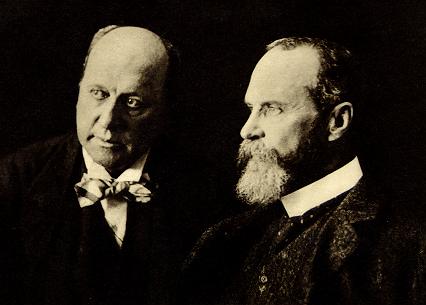"Treasuries Little Changed as Fed Readies Purchases of Debt
By Dakin Campbell and Wes Goodman
April 13 (Bloomberg) -- Treasuries were little changed as the Federal Reserve prepared to buy U.S. government securities today and tomorrow in an effort to cut borrowing costs.
Investors seeking safety during the first global recession since World War II increased holdings of Treasury and agency debt to record levels, a survey of fund managers by Ried, Thunberg & Co. shows. Government and central bank reports this week will show U.S. retail sales rose in March, while a drop in factory production and slower inflation indicate the recession isn’t over, according to surveys of economists by Bloomberg.
“We traded off under the weight of supply last week,” said Martin Mitchell, head of government bond trading at the Baltimore unit of Stifel Nicolaus & Co. “Absent supply, the market will tend to drift lower in yield.”
The yield on the 10-year note rose one basis point to 2.93 percent as of 8:15 a.m. in New York, according to BGCantor Market Data. The price of the 2.75 percent security due February 2019 fell 1/32, or $0.31 per $1,000 face amount, to 98 14/32. U.K. trading of Treasuries was closed today for the Easter holiday, the Securities Industry and Financial Markets Association said.
Fed Buying
Ten-year yields will be in a range of 2.5 percent to 3 percent through the middle of the year, according to Kei Katayama, who oversees $1.6 billion of non-yen debt in Tokyo as leader of the foreign fixed-income group at Daiwa SB Investments Ltd., part of Japan’s second-biggest investment bank. The figure will fall to 2.75 percent by June 30, according to a Bloomberg survey of banks and securities companies with the most recent forecasts given the heaviest weightings. The yield has averaged 4.24 percent for the past five years.
The central bank plans to buy Treasuries due from March 2011 to April 2012 today and from September 2013 to February 2016 tomorrow, according to its Web site. The Fed has more than doubled the size of its balance sheet to $2.09 trillion in the past year by purchasing financial assets including Treasuries in an effort to spur growth.
Investors increased Treasury and agency holdings to 45 percent of their portfolios, matching the all-time high set in October 2002, according to Ried Thunberg, a research company in Jersey City, New Jersey. Agency debt is comprised mostly of securities sold by Fannie Mae and Freddie Mac, the two largest providers of funds for mortgages.
Decline Predicted
U.S. bonds may still fall, the survey showed. An index measuring investors’ outlook for Treasuries through the end of June declined to 43 for the seven days ended April 9 from 44 in the previous week. A reading below 50 means investors expect prices to drop. Ried Thunberg surveyed 25 fund managers controlling $1.35 trillion.
China, the largest holder of U.S. debt outside the nation, should buy more short-maturity U.S. Treasuries than long-term notes, the Oriental Morning Post reported today, citing a former adviser to the People’s Bank of China.
The government should “adjust the maturity structure, and keep asset and currency structures basically unchanged,” Li Yang said in Beijing, the Chinese-language newspaper reported.
Foreign holdings of Treasury bills surged to a record $486.9 billion in January from $207.1 billion a year earlier, according to the Treasury Department. Shorter-maturity bills tend to follow central bank interest rates while bonds are influenced more by inflation.
Yield Curve
The difference between two- and 10-year yields widened to 1.96 percentage points from 1.25 percentage points in December as investors demanded higher yields to lend to the government for longer periods.
Fed purchases have created a Treasury market “bubble” that may keep growing, said Jim Rogers, an investor and author of the book “Hot Commodities.” The Fed, like the Bank of Japan before it, is supporting government debt, he said.
“In Japan, long-term bonds were yielding one half of one percent at one time,” Rogers said on Bloomberg Television in an interview from Singapore, where he lives. “This can go to absurd levels, and bubbles usually do.”
Japan’s 10-year yields, little changed today at 1.46 percent, fell to 0.43 percent in June 2003, the lowest since Bloomberg data tracking the figure began in 1985.
Thirty-year mortgage rates rose to 4.87 percent in the seven days ended April 9 from 4.78 percent the week before, which was the lowest since Freddie Mac, the McLean, Virginia- based mortgage-finance company, began tracking the figure 37 years ago. Rates are 1.97 percentage points more than U.S. 10- year yields, widening from 1.46 percentage points two years ago.
TED Spread
Yields suggest U.S. credit markets haven’t fully recovered after last year’s decline.
The difference between what banks and the Treasury pay to borrow money for three months, the so-called TED spread, narrowed to 95 basis points from 96 basis points on April 10. The spread, which reached 4.64 percentage points in October, was about 36 basis points 24 months ago.
U.S. retail sales rose 0.3 percent in March, according to the median estimate in a Bloomberg News survey before the Commerce Department’s report tomorrow. Industrial production dropped 0.9 percent, the 14th decline in the last 15 months, figures from the Fed on April 15 may show, according to a separate Bloomberg survey.
The Treasury Department has ordered General Motors Corp. to prepare for a bankruptcy filing by June 1, the New York Times reported, raising speculation it will default on its bonds. The report cited people with knowledge of the plans.
Cost of Living
Treasuries fell last week as the government sold $59 billion of notes to help fund President Barack Obama’s spending plans. Government securities dropped 1.2 percent in April, extending a 1.4 percent loss in the first quarter that marked the worst start to a year since 1999, according to Merrill Lynch & Co.’s U.S. Treasury Master Index.
Fed Chairman Ben S. Bernanke’s efforts to spur growth may result in a higher cost of living, said Allan Meltzer, the central bank historian and professor of political economy at Carnegie Mellon University in Pittsburgh.
Inflation “will get higher than it was in the 1970s,” Meltzer said. At the end of that decade, consumer prices rose at a year-over-year rate of 13.3 percent. Rising costs erode the value of the fixed payments from bonds.
The difference between rates on 10-year notes and Treasury Inflation Protected Securities, which reflects the outlook among traders for consumer prices, was little changed at 1.35 percentage points from near zero at the end of 2008. The average for the past five years is 2.25 percentage points.
The U.S. consumer price index probably fell 0.1 percent in March from a year earlier, according to economists surveyed by Bloomberg before the Labor Department report on April 15. In February, the index rose at a year-over-year rate of 0.2 percent."







































No comments:
Post a Comment